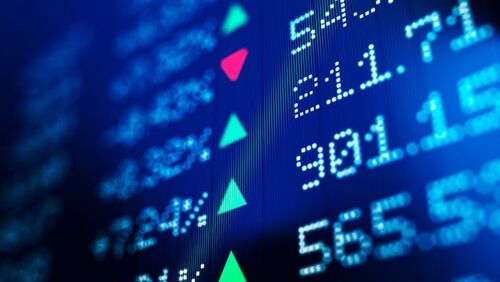Should you buy, hold or sell shares in Super Retail Group?
Super Retail Group (ASX:SUL) was one of the 20 stocks selected for the Stockopedia 2024 top stocks portfolio, whereby we construct a hypothetical diversified portfolio and hold the stocks for 12 months before rebalancing.
It was chosen as it was the highest-ranked Consumer Cyclical stock of sufficient size, with a Stockopedia StockRank of 98 (out of 100).
The business was founded in 1972 by Reg and Hazel Rowe and listed in 2004 as Supercheap Auto. Reg Rowe retired from the board in 2023 but remains the largest shareholder in the group with the family holding 29% of the shares on issue.
Over the past 20 years, the business has grown from a market capitalisation of $210 million and sales of $383 million to market capitalisation of $3.5 billion and sales of $3.9 billion today.
What stores does Super Retail Group own?
The name was changed to Super Retail Group to reflect the growing diversity of the business.
It is now focused on four main brands including BCF, Rebel and Macpac.
Supercheap Auto, which supplies car parts and accessories, remains the largest component with a 38% share of revenue. This is followed by Rebel with 33%, BCF with 24% and Macpac with 5%.
How is Super Retail Group performing?
Over the past five years it has sustained a compound annual sales growth ratio of 8.2%. Sales jumped 22% in 2021 as it benefited from the COVID boost that saw many retailers experience bumper sales as governments handed out money and consumers had limited ability to spend on travel or experiences.
It has not only held onto these gains, but experienced further growth in 2023 of 7%.
A number of other retailers, including Harvey Norman (ASX:HVN) and Temple and Webster (ASX:TPW) experienced sales declines in 2023. Growth is forecast to continue in 2024, whereas for others such as Nick Scali (ASX:NCK), JB Hi-Fi (ASX:JBH) and Harvey Norman, sales are forecast to decline.
In mid-January it pre-empted its half year results by issuing a trading update which was very well received by the market. It showed a positive result of overall sales growth of 3% and like-for-like sales growth of 1%. The Christmas and Black Friday period saw robust trading despite cost of living pressures.
The half year profit before tax figure was $204 million. This was well above market expectations and even beat their guidance range from a month earlier. Gross margins improved by 30 basis points to 46.5%. But the cost of doing business (CODB) increased as had been previously foreshadowed, resulting in a 5% decline in profits compared to the prior corresponding period.
The largest division by revenue, Supercheap Auto, also has the highest operating margins at 15.3%. There are 331 stores with plans for another eight this year and 40 upgrades.
Rebel sales were a bit soft in the most recent half, but it had strong like-for-like sales growth in FY23 of 9%.
What's next for Rebel and BCF?
In October it launched a new customer loyalty program. Rebel is investing in its stores, with a focus on upgrading them to the RCX (Rebel customer experience) format.
These are large format stores with a wide range of products. They also include experience zones such as indoor basketball and football and gaming consoles.
These upgraded stores have shown significantly improved sales performance of 50%. There are now 15 of these stores (18% of the total) and they are planning to upgrade another four in FY24.
BCF and Macpac are the least profitable segments with operating margins of 9.7% and 8.7% respectively. Strategies in place to try and address this include building out more BCF Superstores which have proven to be a lot more profitable.
Overall the business achieved an operating margin of 10.8% slightly higher than the average for the last five years of 10.2%. The average net profit margin over the last five years has been 6.3%.
As is often the case with retailers these margins are quite tight, but they are fairly typical for the industry.
At the beginning of January, market analysts were forecasting that earnings per share (EPS) would fall by 15% in financial year 2024.
Three months later they are still forecasting a decline but now it is only 6% given the better than expected results for the half year that were announced in February.
What does the balance sheet look like?
Super Retail has a really solid balance sheet. It holds no bank debt and had a cash balance last December of $321 million.
The debt shown on their balance sheet is for capital leases, that is secured leases over the properties that they use for stores and warehouses.
Given the share price has risen 34% over the last 12 months while EPS is forecast to decline, the question arises as to whether the stock is now expensive. The forecast PE ratio is 14.4, which is certainly not excessive.
It has a fully franked dividend yield of 5.2%. This is a better yield than their peers, and the PE ratio is lower than or equal to its peers. For example JB Hi-Fi has a forecast PE of 16.7 and Harvey Norman 15.2.
Super Retail has generated a total return of 4.8% for the first quarter. As it is part of our Stockopedia top stocks portfolio, we will be keeping a close eye on it for the remainder of the year.
The author has holdings in SUL.
Get stories like this in our newsletters.


